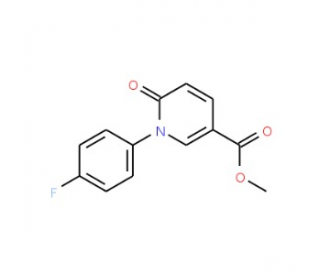详细说明
- Purity>95%, by SDS-PAGE under reducing conditions and visualized by Colloidal Coomassie® Blue stain at 5 μg per lane
- Endotoxin Level<1.0 EU per 1 μg of the protein by the LAL method.
- ActivityMeasured by its ability to hydrolyze S-35 labeled bovine cartilage chondroitin sulfate. <20 ng of recombinant human SPAM1 is required for the 50% hydrolysis of 10 μg chondroitin sulfate, as measured under the described conditions. See Activity Assay Protocol on www.RnDSystems.com
- SourceChinese Hamster Ovary cell line, CHO-derived Met1-Thr497, with a C-terminal 6-His tag
- Accession #
- N-terminal Sequence
AnalysisLeu36 - Predicted Molecular Mass53 kDa
- SDS-PAGE60-70 kDa, reducing conditions
| 6436-GH | | |
| Formulation Supplied as a 0.2 μm filtered solution in Tris and NaCl. | ||
| Shipping The product is shipped with polar packs. Upon receipt, store it immediately at the temperature recommended below. | ||
| Stability & Storage: Use a manual defrost freezer and avoid repeated freeze-thaw cycles.
|
|
- Dilute rmCHST3 to 0.3 mg/mL in Labeling Buffer.
- Combine 200 µL Labeling Buffer, 60 µL diH2O, 60 µL PAP35S, 40 µL Chondroitin Sulfate, and 40 µL rmCHST3 and incubate mixture at 37 °C for 2 hours.
- Add 200 µL diH2O to incubated rxn mixture for a final volume of 600 µL (rxn mix sufficient for ~40 rxns).
- Dilute rbSPAM1 to 100, 33.33, 3.33, 1.0, 0.2667, 0.0667, 0.01, and 0.000667 µg/mL in Assay Buffer.
- Combine 15 µL of rbSPAM1 at each dilution with 15 µL rxn mix. Include a control containing 15 µL Assay Buffer and 15 µL rxn mix. Incubate at 37 °C for 30 min.
- Add 15 µL gel loading buffer to each rxn. Mix.
- Load 30 µL of each rxn per lane on a gel. Leave empty lanes between samples. Run at 200 V for 30 min.
- Transfer gel onto blotting paper and dry with gel dryer for 1 hr or until fully dry.
- Affix two autorad markers to the blotting paper next to the dried gel.
- In a darkroom expose dried gel to X-ray film by enclosing overnight in a cassette. Develop the following day.
- Using the dried gel, begin marking regions to be cut out for scintillation counting. Mark a horizontal line across the top of the entire gel just under the bottom of the loading wells. Mark a second line just below the loading dye migration front.
- Using the developed film as an overlay, mark a third line where the labeled product migrated (ignore any free sulfate which will appear equally in all lanes and will have migrated the furthest). Hint: Use the highest enzyme-containing lanes to identify the product. For the control, identify the empty region where the product would appear. The area between the top of the gel and the dye front is considered to contain the labeled starting material. The area between the dye front and the product line is considered to contain the compact cleavage product resulting from the reaction.
- Mark vertical lines distinguishing one lane (reaction condition) from another.
- Cut each region (two per lane) and place each into a separate liquid scintillation vial.
- Add 5 mL liquid scintillation fluid to each vial and count the vials for 35S.
- Determine the amount of rbSPAM1 required for 50% cleavage by plotting % cleavage (control adjusted) vs. ng of rbSPAM1 with 4-PL fitting.
- Chondoitin Sulfate: 10 ug
- rbSPAM1: 1500, 500, 50, 15, 4, 1, 0.15, and 0.01 ng
GPI‑anchored enzyme located on the sperm surface and inner acrosomal membrane (4). SPAM1 degrades hyaluronic acid (HA), a major structural glycosaminoglycan found in extracellular matrices and basement membranes. The enzyme activity enables sperm to penetrate through the HA-rich cumulus cell layer surrounding the oocyte and therefore facilitates the fertilization process (5). However, detailed enzymatic analysis of this enzyme is hindered by the limited techniques/methods available to monitor the HA degradation products (6). A novel method for analyzing SPAM1 activity was utilized here. Because of the structural similarity between HA (repeating units of GlcA beta 1-3GlcNAc) and chondroitin sulfate (repeating units of GlcA beta 1-3GalNAc), the enzyme is also able to hydrolyze chondroitin sulfate. In this assay, radiolabeled chondroitin sulfate was digested with recombinant SPAM1. Degradation products were then separated using a polyacrylamide electrophoresis and visualized with an X-ray film (7). The bovine SPAM1 is 63% identical to human homologue in sequence.
- References:
- Lathrop, W.F. et al. (1990) J. Cell Biol. 111:2939.
- Lin, Y. et al. (1993) Proc. Natl. Acad. Sci. U.S.A. 90:10071
- Csoka, A.B. et al. (2001) Matrix Biol. 20:499.
- Phelps, B.M. et al (1988) Science 240:4860.
- Gmachl, M. et al. (1993) FEBS Lett. 336:545.
- Hofinger, E.S et al. (2007) Glycobiology 17:963.
- Wu, Z.L. et al. (2010) BMC Biotechnol. 10:11.
- Long Name:Sperm Adhesion Molecule 1
- Entrez Gene IDs:6677 (Human); 353352 (Bovine)
- Alternate Names:EC 3.2.1.35; HYA1; HYAL1; HYAL3; HYAL5; hyal-PH20; hyaluronidase PH-20; Hyaluronoglucosaminidase PH-20; MGC26532; PH20; PH-20; SPAG15; SPAM1; sperm adhesion molecule 1 (PH-20 hyaluronidase, zona pellucida binding); Sperm adhesion molecule 1; Sperm surface protein PH-20












